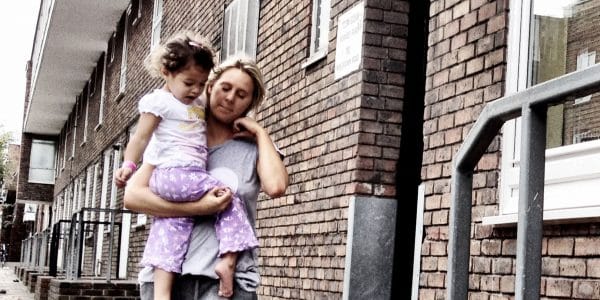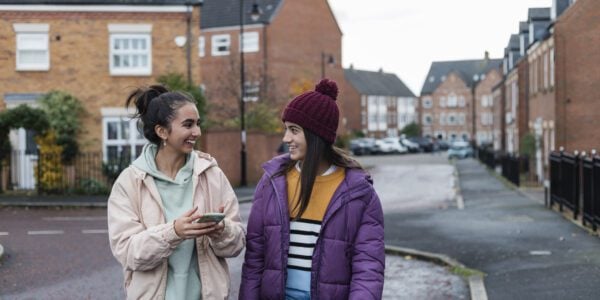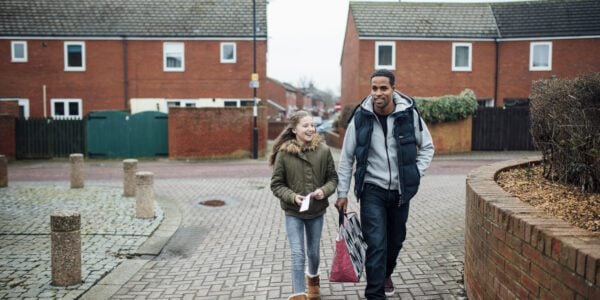
15/06/20
3 min read
There is no simple North–South or urban–rural divide in the way that the COVID-19 crisis is affecting health, jobs and families across England. Areas whose residents look particularly vulnerable to the health effects are not in general the same as those likely to be hit hardest by job losses. Areas with more children at particular risk, because they are poor or have been referred to children’s services, tend to be different again.
That said, some local authorities do look vulnerable in multiple dimensions. Two areas that stand out as most vulnerable on all three dimensions are Torbay and the Isle of Wight, reflecting their elderly populations, economic reliance on tourism and hospitality, and pockets of local socio-economic disadvantage.
These are among findings of new IFS analysis, funded by the Nuffield Foundation and part of the IFS Deaton Review of Inequalities. The research finds that the balance between protecting public health, enabling economic activity and minimising the social costs of isolation could look very different in different parts of England, and are often very different even in neighbouring local authorities.
The report also finds that:
- Coastal areas are notably vulnerable to both health and economic impacts of the crisis. Many coastal towns have elderly populations vulnerable to COVID-19 and a lot of low-paid work in the hospitality sector. Many are already deprived, and the crisis could exacerbate that.
- Areas in the northern spine of England are more vulnerable than average to health impacts and impacts on families and children: these include South Yorkshire, Derbyshire and Nottinghamshire, which have relatively older populations and where disadvantage means children may be especially at risk from lost schooling. Other such areas are clustered in the West Midlands (particularly around Birmingham) and in the cities of the North West and North East.
- On average, it is more affluent local authorities where local labour markets might take a bigger hit. While workers in shut-down sectors like retail and hospitality are often low earners, many of them work in relatively well-off areas.
- While there are some regional patterns in vulnerability, in many cases neighbouring local authorities look set to have very different experiences of the crisis. For example, Nottinghamshire has very different exposure from that of neighbouring Leicestershire on all three dimensions of vulnerability.
- While London has seen some of the highest rates of COVID-19 so far, its younger population is less vulnerable to experiencing serious symptoms from the disease. There has been a very unequal health effect within London though, with those boroughs (such as Camden and Islington) with younger, healthier populations having seen fewer confirmed COVID-19 cases (per 10,000 residents) and lower COVID-19 death rates. However, many London boroughs will face significant economic and social costs, as shut-down sectors such as hospitality and tourism are important employers and many children are from disadvantaged families.
- Designing policy to reflect these different local needs will require a highly coordinated response drawing on different services and layers of government. Local government is responsible for children’s services, whilst education is split between local government and academies. Economic and health policy will also require input from national government and from the NHS.
Alex Davenport, an IFS Research Economist and an author of the report, said:
“There is a small group of local authorities in England where public health, local jobs and families are all more vulnerable than average. While several of these areas are in the North West, the group includes local authorities from Dorset to Northumberland. But it is Torbay and the Isle of Wight that stand out as the most highly vulnerable, reflecting their elderly populations, reliance on tourism and hospitality, and pockets of socio-economic disadvantage.”
Imran Rasul, Research Director at IFS and Professor of Economics at University College London, and another author of the report, said:
“There is no single measure that captures all the different types of vulnerability during this crisis. The risks to public health, local economies and vulnerable families are spread across England in a patchwork. The crisis will require policymakers at different levels to coordinate their response, since the geography of vulnerabilities has shifted away from the traditional North–South or urban–rural divides.”
Mark Franks, Director of Welfare at the Nuffield Foundation said:
“This report illustrates how different areas of England will be affected by the virus in a unique way, which means the impact on health, jobs and families will evolve differently within each area as we progress through the stages of this crisis. The government needs to understand these localised differences in timescales and impacts in order to work effectively with local authorities to target the right support in the right areas at the right time.”















































